Outdoor Decking Choices: WPC, Merbau or Bamboo?
Dec 3, 2025, 9:20 AM
You own a landscape villa worth 10 million that needs to be renovated in a Nordic natural wood style, and you happen to have enough funds on hand. This is the first villa in your life, and it is also the new house for you and your girlfriend to get married in~~ You are very persistent in wanting to decorate it yourself, so you start surfing the internet, looking for decking merchants.
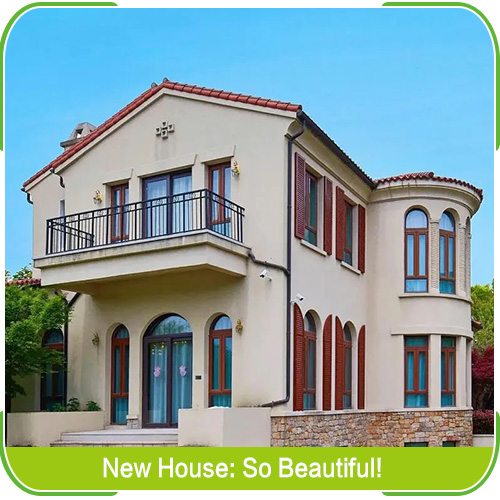
Enveloped in happiness, you face the dazzling array of decking brands on the market with full confidence. Although you are not sure if you can find the most cost-effective decking merchant, with your persistence and meticulousness, you finally select a few brands from thousands.
So many brands, so many different types of decking products...
Which one should you choose to achieve the visual effect on the design drawings?
Which one should you choose to make your newlywed wife live comfortably and safely?
Which one should you choose to make maintenance easier later on?
I have selected several types of decking products that are quite controversial and have a strong sense of camera presence on the market, including WPC (Wood Plastic Composite) decking, bamboo decking, and Indonesian merbau, and I have listed the usage scenarios, advantages, disadvantages, and Buying Tips for these types of decking.
WPC Decking
What is WPC decking? At first glance, it sounds like wood decking made of plastic? Yes. WPC decking is a new type of environmentally friendly and energy-saving composite decking, mainly made of wood (wood cellulose, plant cellulose) as the base material mixed evenly with thermoplastic polymer materials (PE plastic) and processing aids, and then formed by heating and extruding through mold equipment. It has the properties and characteristics of both wood and plastic and is an alternative to solid wood decking.
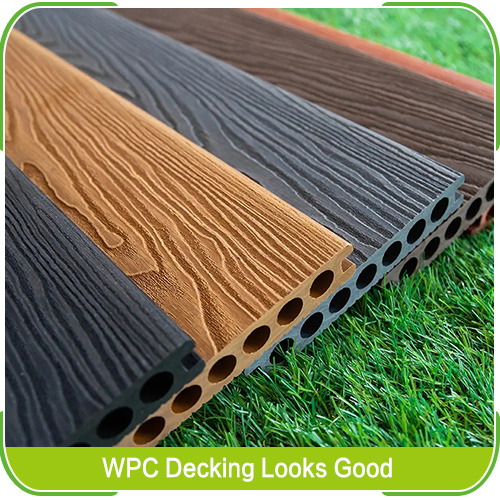
WPC Decking Usage Scenarios:
WPC decking is waterproof and corrosion-resistant, currently mainly used in garden landscapes, interior and exterior wall decorations, decking, guardrails, flower pools, pavilions, etc.
Advantages of WPC Decking:
- Waterproof and moisture-proof. It fundamentally solves the problem of wood products being prone to rot, expansion, and deformation after absorbing water in moist and watery environments, and can be used in environments where traditional wood products cannot be applied.
- Insect and termite resistant, effectively preventing insect harassment and extending the service life.
- In terms of color, there is a relatively large selection space (rich in colors). It has both the natural wood feel and wood texture, and the color can be customized according to personal preferences.
- Strong plasticity, can easily achieve personalized shapes, fully reflecting personal style.
- High environmental protection, no pollution, no harm, recyclable. The product does not contain benzene substances, the formaldehyde content is 0.2, lower than the EO level standard, which is the European grading environmental protection standard, and recycling greatly saves the use of wood.
- Good processability. Can be nailed, planed, sawed, drilled.
- Simple installation, convenient construction, no need for complicated construction processes, saving installation time and costs.
- No need for maintenance and care, easy to clean, saving later maintenance and care costs.
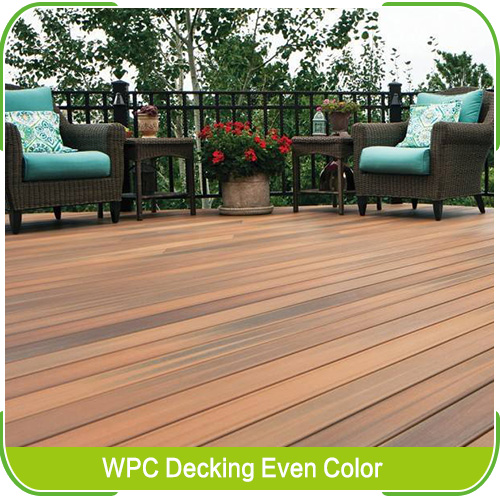
Disadvantages of WPC Decking
Lower texture:
WPC, as the name suggests, is a product made of "wood-plastic composite material". Mainly using recycled waste plastics (polypropylene (PP), polyethylene (PE), polyvinyl chloride (PVC), etc.) as raw materials, by adding wood powder, rice husks, straw, and other waste plant fibers mixed into a new wood material, then processed through extrusion, molding, injection molding, and other plastic processing technologies.Final Effect:
After seeing many buyers' real-life renovation effects, I can tell you without reservation: this decking is affordable, if the budget is not very high, it can be considered; for those who want to renovate with a higher quality feel, such as villa courtyards, high-end community outdoor balconies, etc., the expected outcome after renovation may be greatly discounted.Short service:
lifeWood-plastic composite products are poor conductors of heat. If the external environment temperature changes greatly, the surface and interior will heat unevenly, easily causing expansion and contraction deformation, etc. Over a long period, this will shorten the service life of WPC decking.Poor noise reduction effect:
Due to its material, be careful indoors to avoid noise. Especially the sound of high heels, slippers, heavy objects colliding with, and rubbing against the floor will be relatively loud. If living in an apartment, this defect should be noted.Many inferior products:
Some manufacturers, in order to save costs, will reduce the use of antioxidants and other related additives, or reduce the amount of wood powder and other wood fibers, which can easily lead to severe fading and material brittleness, among other engineering accidents.The surface of WPC decking is too smooth and slippery when wet.
Especially after rain on terraces and courtyards, be careful when the elderly and children are entering and playing.Some WPC decking will fade.
You must have seen many scenes of warping and fading, which is the true face of WPC under the rain and wind throughout the year.
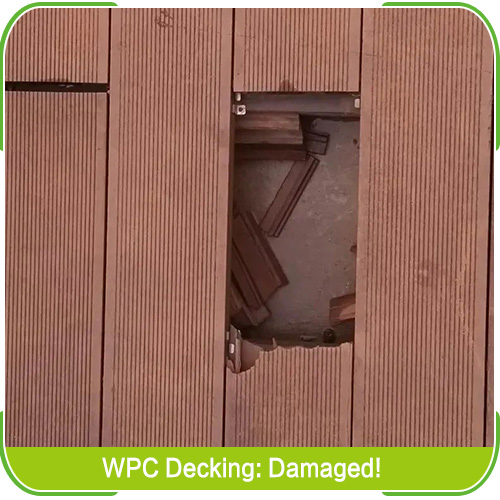
Buying Tips
In addition to the usual appearance, touch, and smell, in terms of sound insulation performance, you can test by dropping a heavy object on the floor. If the sound is very small, it indicates good sound insulation; if the sound is loud, it can be determined that it is not a good floor.
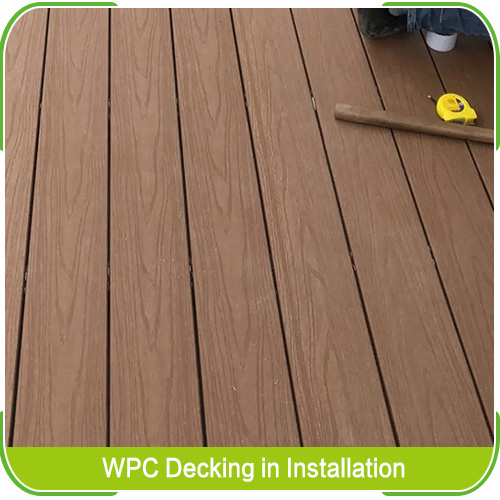
Bamboo Decking Usage Scenarios:
Widely used in parks, walkways, terraces, new property show areas, community pathways, outdoor large buildings, outdoor furniture, stairs, handrails
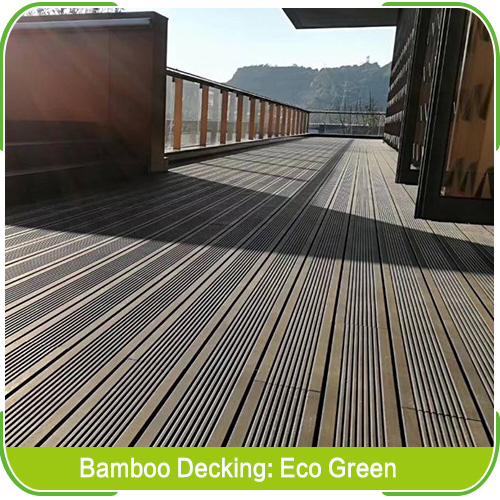
Advantages of Bamboo Decking:
Durability:
Bamboo itself has high hardness and strength, and after proper treatment, the wear resistance and durability of bamboo decking can be significantly improved. Under normal use and maintenance, bamboo decking can maintain a service life of decades.Environmental protection:
Bamboo, as a fast-growing, renewable plant resource, has a shorter growth cycle than wood, so it causes much less damage to forest resources than traditional preservative wood.Aesthetics:
Bamboo material has a natural texture and color, giving a fresh, natural feeling. Over time, the color of bamboo decking may gradually darken, presenting an even more elegant appearance.Low maintenance cost:
Apply oil protection once a year, and rinse with water usually.Good stability:
Outdoor bamboo decking has targeted water content control for different climates, so its cracking and deformation rate is much smaller than that of solid wood decking. Plus, the bamboo fiber uses a hollow brick arrangement, which greatly strengthens the tensile and compressive strength.
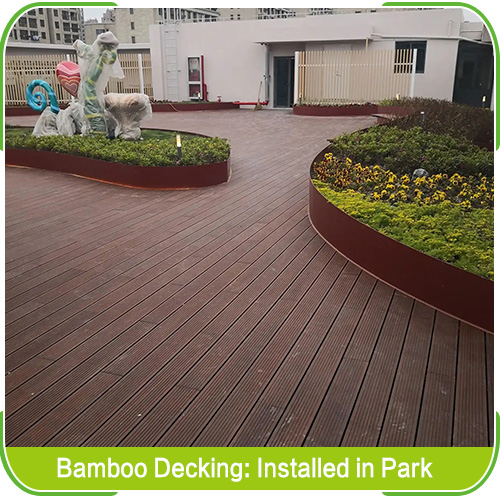
Disadvantages of Outdoor Bamboo Decking
- The biggest disadvantage is its high price.
- It is a natural material and may deform with climate changes.
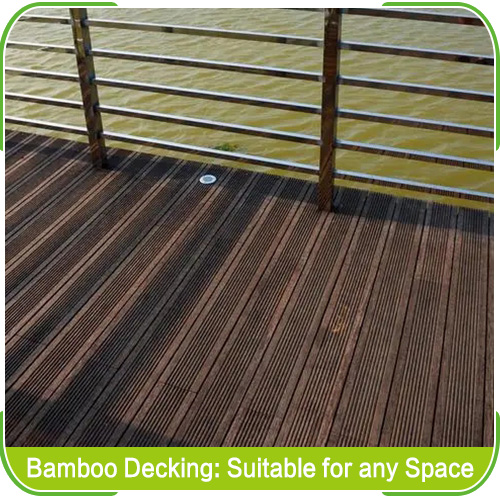
Buying Tips:
- Whether outdoor bamboo decking has undergone strict insect and moisture-proof treatment, Do not overlook this point, as it is key to ensuring the bamboo wood decking we purchase does not have bugs or mold. Without this process, the service life of bamboo wood decking will be shortened, and it should not be chosen.
- Whether outdoor bamboo decking is made by high-temperature and high-pressure gluing. (Some manufacturers' glue cannot guarantee safety, easily leading to cracking.)
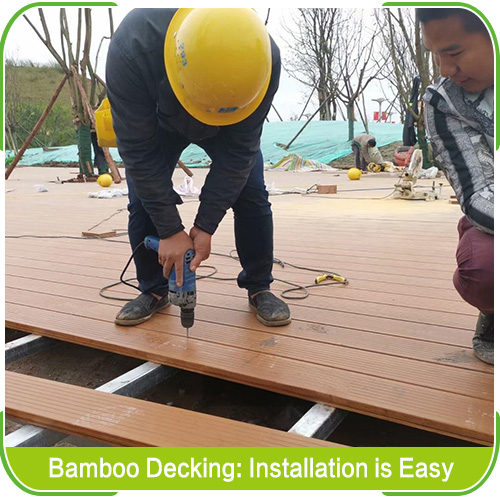
Indonesian merbau Usage Scenarios:
Indonesian merbau decking is safe to use in gardens, as children's play areas. It is also used for indoor decking, wooden houses, sheds, frames, doors and windows, etc. Indonesian merbau wood decking is widely used in the outdoor industry, such as greenhouses, gazebos, sunrooms, wooden houses, floor pools, wooden fences, docks, beehives, and gardens, etc.
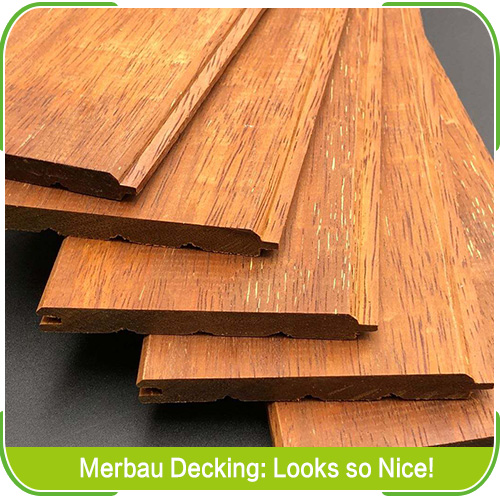
Advantages of Indonesian Merbau:
As a natural preservative wood, it can be used directly without preservative treatment. Indonesian merbau does not leave any harmful residues in the soil or water and can be used sustainably as a recyclable resource.
The stability of merbau is good, and it does not exhibit natural splitting, warping, cracking, etc. Moreover, its hardness is high, and Indonesian merbau furniture with rich texture and color can remain in harsh climatic conditions.
Indonesian merbau contains natural oils, making it not only durable and with a minimal shrinkage rate for outdoor decking but also resistant to pests and extreme weather conditions.
merbau color is relatively deep, showing a dark red color, and the cross-section of Indonesian merbau shows yellow or brown. Rich in black tree gum and sulfur-colored deposits, visible to the naked eye, soluble in water turning it yellow. Due to the growth environment, the wood contains minerals, so the stability of Indonesian merbau is very good, comparable to mahogany, and can be used as an alternative to mahogany furniture in interior decoration.
Indonesian merbau decking, you can see the beautiful gloss and soft wood grain, with orderly textures crisscrossing, very beautiful.
Long service life. Preservative wood can be used for more than 30 years. And the price of Indonesian merbau decking is relatively moderate among solid woods.
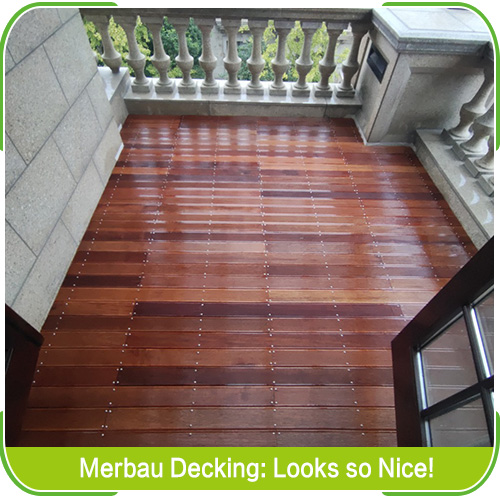
Disadvantages of Indonesian merbau:
- Indonesian merbau is a high-grade hardwood, compared to general preservative wood prices, the price of Indonesian merbau is relatively high, and good quality Indonesian merbau wood boards are generally priced above 2k USD.
- Indonesian merbau requires high processing standards, needing professional qualification timber processing factories for processing, which also increases the final cost.
Buying Tips:
- The Indonesian merbau wood decking bought should be placed indoors for a period before installation, which is also a protective measure to prevent merbau decking from deforming due to moisture.
- After aging, Indonesian merbau decking is recommended to be painted with wood oil or paint according to the manufacturer's recommendation, or it can be sprayed or soaked.
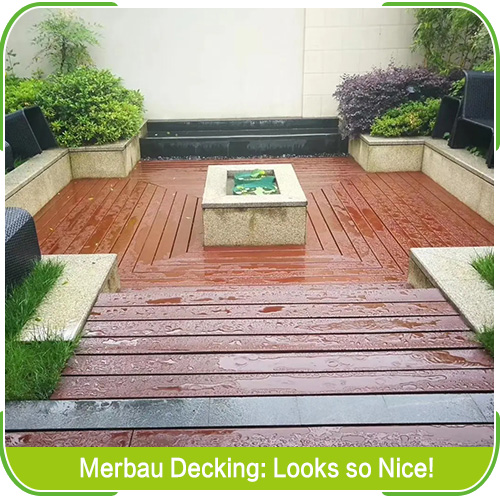


 皖公网安备 34180202000049号
皖公网安备 34180202000049号